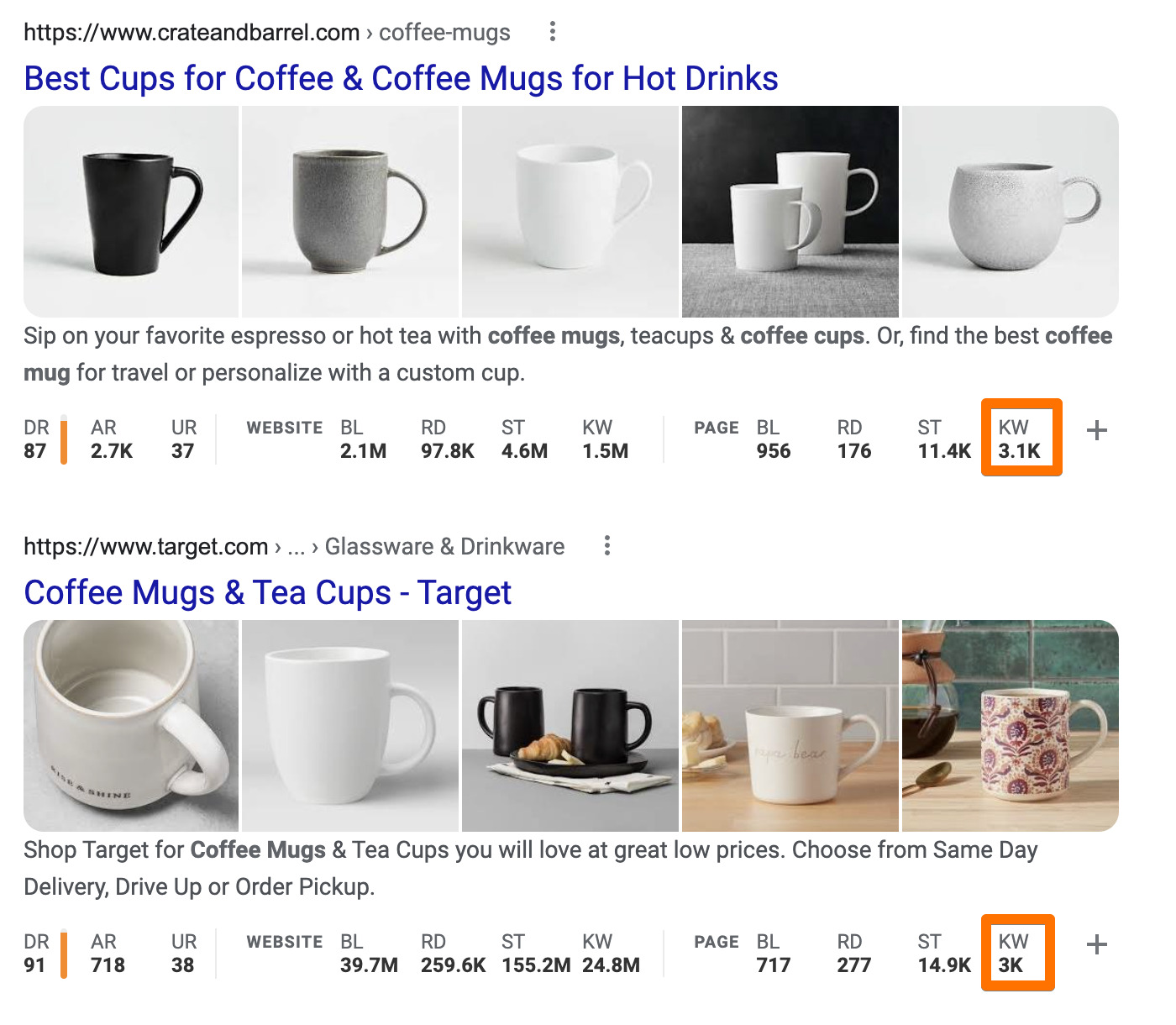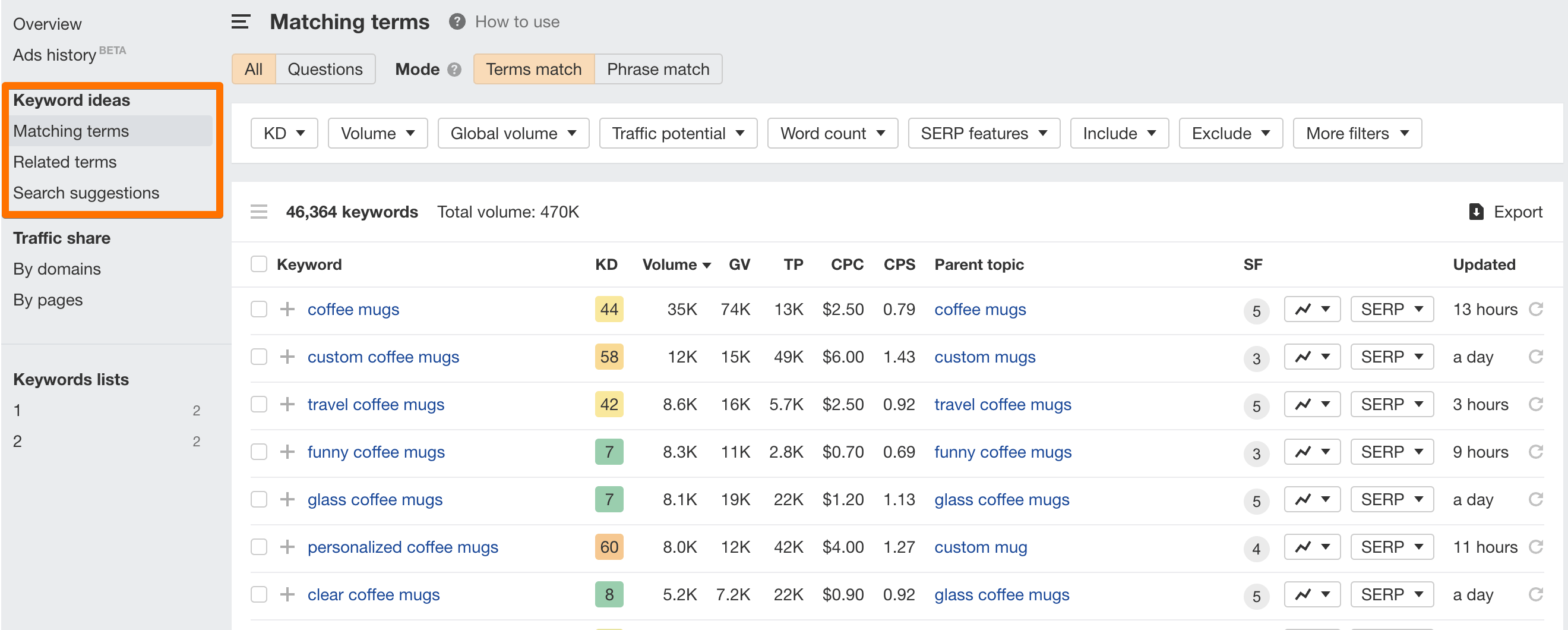Secondary Keywords
What are Secondary Keywords?
Secondary keywords are any keywords closely related to the primary search term that you’re targeting with your page. All synonyms, subtopics, and long-tail keyword variations can be considered secondary keywords.
When you include these related keywords in the subheaders and body text on a page, you’re covering every major facet of a topic and helping Google understand what your page is about.
Why are secondary keywords important?
Keeping secondary keywords in mind allows content creators to cover the topic in full, and thus meet the readers’ expectations.
Plus, when your page is published and indexed, all of these secondary keywords increase the chances of ranking for hundreds or even thousands of different keywords, not just for the primary one.
We did a study and found that the average number of keywords for a top page on Google was ~1,000 keywords.
If you liken SEO to going fishing, then focusing on a primary search term alone is like having just one reel in the water – by contrast, adding secondary keywords is like having dozens (or more) reels in the water. You may or may not catch that giant fish you were hoping to, but you will reel in something.
And by chance, you may even find that one of your secondary keywords is the better term for you to rank for.
How to find secondary keywords
There are several ways to find the secondary keywords you can target for a chosen topic.
To illustrate the point, let’s take a look at three of the most useful methods for uncovering secondary keywords, all using the keyword “coffee cup” as our primary search term.
Run your topic through content optimization tools
One of the easiest ways to see the secondary keywords for a topic is to run your primary search term through a content optimization tool. Some of the most popular optimization software include Surfer, Clearscope, MarketMuse, and Page Optimizer Pro.
All of these are fairly similar when it comes to the process you’ll use.
Some tools will also suggest how many times a secondary keyword should appear on your page, but we don’t recommend sticking to these numbers. Just write in a natural way.
Check the organic keywords of the top-ranking pages
Another handy method of locating secondary keywords for a topic is to pull up the pages that are already ranking for your chosen topic and see what other terms they rank for.
Let’s search for “coffee cup” in Google. If you have Ahrefs SEO Toolbar installed, you will see the most important SEO metrics right under the search results. We’re looking for pages with the maximum number of organic keywords.

Just click on this number to open the Organic Keywords report in Site Explorer. It will show you all keywords the page is ranking for.

You can see that one of the page’s highest-ranking keywords is “coffee cup,” which is our primary search term – but there are also thousands of other secondary keywords. Just by scrolling through this list, we can quickly compile a list of valuable secondary keywords, including:
- crate and barrel coffee mugs
- unique coffee mugs
- cool mugs
- rounded mugs
- fancy mug
- etc.
This method is a great way to come up with ideas you may never have thought of otherwise.
Use Keywords Explorer
The third method involves going straight to Keywords Explorer with your primary search term and checking the “Keywords Ideas” section. It gives you a plethora of opportunities:
- Matching terms (keywords containing your seed keyword, including questions)
- Related terms (similar ranking keywords, frequently used keywords)
- Search suggestions (from autocomplete)
The “Matching terms” mode alone shows 46k suggestions for the term “coffee mugs”

Now all you have to do is choose the best secondary keywords and use them wisely in your copy.